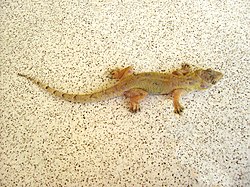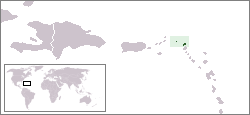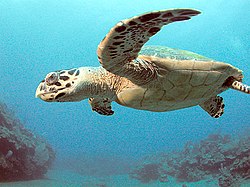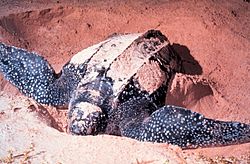| Geckos ( Gekkonidae ) |
|---|
| Species | Common name(s) | Notes | Image |
|---|
| Hemidactylus mabouia | House gecko | Introduced. |  |
| Sphaerodactylus parvus | | Regionally endemic. Highly abundant. Formerly described as subspecies of Sphaerodactylus macrolepis chiefly found in the Greater Antilles until elevated to species level in 2001. [4] | |
| Sphaerodactylus sputator | Island least gecko | Regional endemic. Highly abundant. |  |
| Thecadactylus rapicauda | Turnip-tailed gecko | | |
| Iguanas and anolids ( Iguanidae ) |
|---|
| Species | Common name(s) | Notes | Image |
|---|
| Anolis carolinensis | Green anole, Carolina anole, red-throated anole, American anole, American chameleon | Recent introduction; native mainly to southeastern United States. [5] |  |
| Anolis gingivinus | Anguilla anole, Anguilla Bank anole | Regional endemic. Widespread and common on the main island and its satellites. | |
| Iguana delicatissima | Lesser Antillean iguana, West Indian iguana | Vulnerable. Regional endemic. Restricted to the Little Bay area. Only about 50 individuals were believed to remain on Anguilla in 1999. [6] |  |
| Iguana iguana | Green iguana, common iguana | Colonized Anguilla due to either Hurricane Luis or Marilyn in 1995, by floating on natural rafts from Guadeloupe; has apparently since sustained a breeding population on Anguilla, possibly threatening the native I. delicatissima. [7] |  |
| Whiptails ( Teiidae ) |
|---|
| Species | Common name(s) | Notes | Image |
|---|
| Pholidoscelis corax | Censky's ameiva | Endemic. Restricted to the tiny islet of Little Scrub, off the coast of Scrub Island. | |
| Pholidoscelis corvina | Sombrero ameiva | Endemic. Restricted to Sombrero Island. | |
| Pholidoscelis plei | Anguilla Bank ameiva | Regional endemic. Common; found on the main island of Anguilla and most of its satellites. |  |
| Skinks ( Scincidae ) |
|---|
| Species | Common name(s) | Notes | Image |
|---|
| Mabuya mabouya [8] | | Regional endemic. |  |
| Worm snakes ( Typhlopidae ) |
|---|
| Species | Common name(s) | Notes | Image |
|---|
| Ramphotyphlops braminus | Brahminy blind snake, flowerpot blind snake | Presence on Anguilla recently discovered. Widely distributed in the tropics, but limited in the Lesser Antilles. |  |
| Colubrids ( Colubridae ) |
|---|
| Species | Common name(s) | Notes | Image |
|---|
| Alsophis rijgersmaei | Leeward Island racer | Endangered. Regional endemic. Found on main island and Scrub Island. | |















